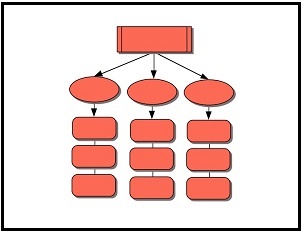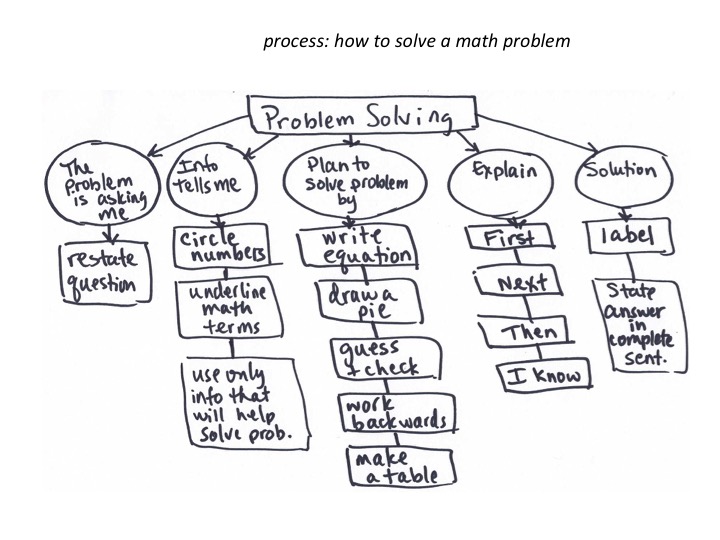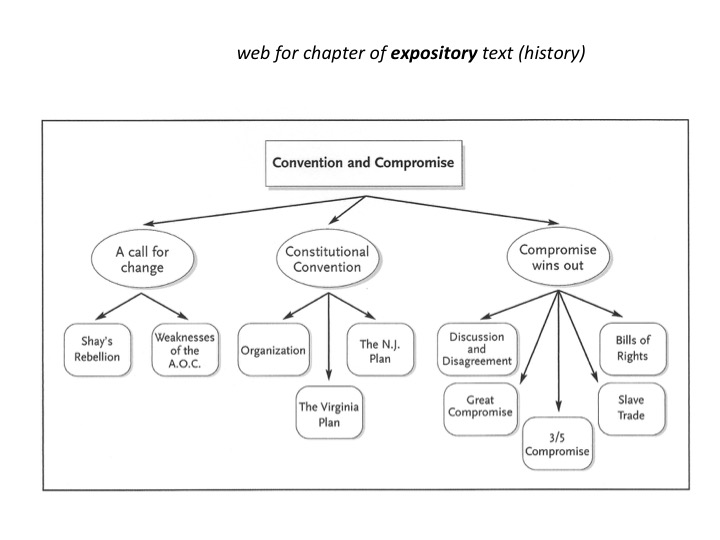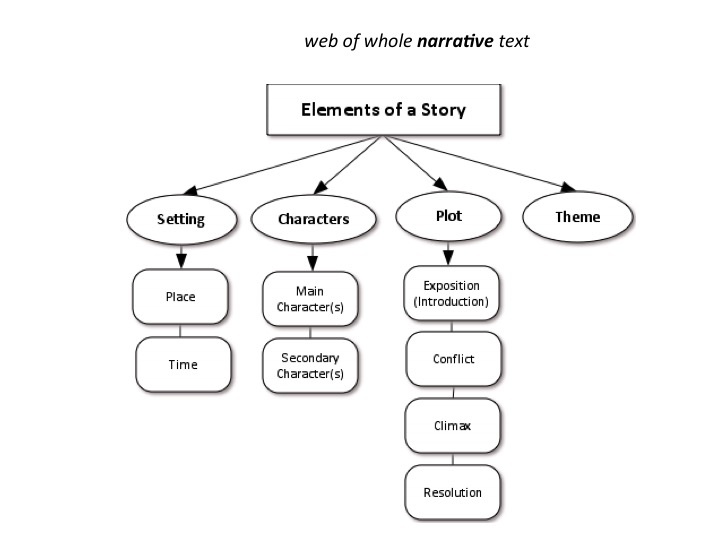Top-Down Topic Webs

A top-down topic web is one of the four student comprehension strategies from The Key Comprehension Routine. It is a graphic organizer that presents topics and sub-topics in a hierarchical way, using varied shapes and placement on the page to represent the connections among the topics.
Often in training I get the following question: How many topic webs should I make? I keep waiting for the rest of the question. Are teachers asking how many to make over the course of a semester? Are they asking me what the expectation is from their administrators? I hope they are asking me how many top-down topic webs are needed for kids to be successful using them independently to support their comprehension, and that is how I respond.
It all has to do with human motivation. Research shows we need to be at least 50% successful at something before we will be motivated to do it again. It is why I do not downhill ski – my first attempts were horrific, I thought even life-threatening. I have zero motivation to ski; I am even averse to cross country skiing because declines are inevitable. Not doing it.
Transfer that to reading and comprehension. If I am not at least 50% successful, why would I choose to read on my free time? Why would I choose to put energy and effort into this task of reading? Educators must use every strategy we can find to make students successful in comprehending what they read. Top-down webs used before reading can frame a student’s comprehension, provide for them a GPS about what is ahead. This helps them achieve a measure of success. Topic webs used during reading can keep kids on the right highway; help them monitor their comprehension. Topic webs used after reading can serve as a general study guide, allowing students to see their path in relation to the entire trip. I have included several classroom examples of top-down topic webs below.
If a topic web is used once or twice during the course of a year, how successful do you think the student will become at using and making them?
I see top-down webs in my sleep (I know, here is where you tell me I need a life…). I have done them so frequently that it is a go-to strategy for me when I plan any writing task, discuss any book or article, organize my life. I have done hundreds. In schools where kids see them regularly in all content areas and know how to use them, these kids have probably seen hundreds.
The answer to the question? Do hundreds.





 Becky joined Keys to Literacy in 2007 and has been a literacy educator for over 35 years. She has taught at the elementary, middle, and high school levels, and been involved in many school and district-wide initiatives that address core literacy issues. She has been recognized as a Teacher of the Year by the International Reading Association.
Becky joined Keys to Literacy in 2007 and has been a literacy educator for over 35 years. She has taught at the elementary, middle, and high school levels, and been involved in many school and district-wide initiatives that address core literacy issues. She has been recognized as a Teacher of the Year by the International Reading Association.
Becky
Nicely written! The anecdotes were instructive AND interesting, which I especially appreciated, and your style is readable and original. I always appreciate it when a writer lets their personality show through into their writing. It makes for the best writing in my book.
Cristia
Hi there,
I’m really interested in simplifying things, but when I tried to use a topic web myself in place of a venn diagram, I ran into problems. A venn diagram can show the common features in the middle, but I can’t see how a topic web does this.
Similarly, how can a topic web show sequence? Sequence to me seems really clear when it runs from left to right but how can a top down chart show this? Does this look like the stacked subordinate topics that are used when you have limited space, the only difference that there are arrows pointing down to each box?
Great questions, Mat! There are very specific types of graphic organizers that do a great job of visually representing a specific pattern of organization, including the overlapping Venn that you mentioned for compare and contrast (similarities in the middle), and a left-to-right (or top to bottom) set of boxes for each step in a sequence. If teachers find these better for these specific purposes, they should use them. The problem is that, because they are unique to a specific purpose, it is difficult to use them for other purposes. The top-down topic web, on the other hand, is a more flexible option that can be used more broadly. To answer your question about how it might be used for compare/contrast and sequence: For compare & contrast, you can use two shapes across the top (one for similarities, one for differences) OR you can use three shapes across the top (one for details about the first item, one for details about the second item, and the last for a list of how they overlap. For sequence: As you suggested, you can use a shape for each step (or event in a narrative sequence), going from left to right. You can include a number in each shape to further clarify that this is a sequence, AND you can add left to right arrows that connect each shape to the next one. The nice thing about a topic web is that under each major step/event, you can then add additional shapes with details related to each step. I hope this clarifies how a topic web might be used!
That’s great, thank you so much for your helpful reply Joan. I am using them with my third graders at the moment and really liking their versatility!
Hi there,
I’m really interested in using top-down topic webs so that I don’t have to teach students all the different text structure diagrams. I read what you wrote in the comments about how to make one for compare/contrast and sequence but when I tried to make one myself, I found myself getting confused. Same thing happened with the problem/solution one. Mine did not look like the top-down topic web that you show in this article.
Do you have an example of each text structure type using a top-down topic web? I don’t think I can model them unless I can actually see if they work and if they seem more intuitive compared to the traditional diagrams for each text structure. I would love to see them as they seem like a great idea!
Many thanks!
Tracey
You may find helpful this video of a Keys to Literacy trainer explaining topic webs: https://www.youtube.com/watch?v=vOkJRJdzrPY Also, towards the end of this recorded webinar by Joan Sedita you will find suggestions for using topic webs to represent the 3 types of writing: informational, opinion, and narrative: https://vimeo.com/478060364